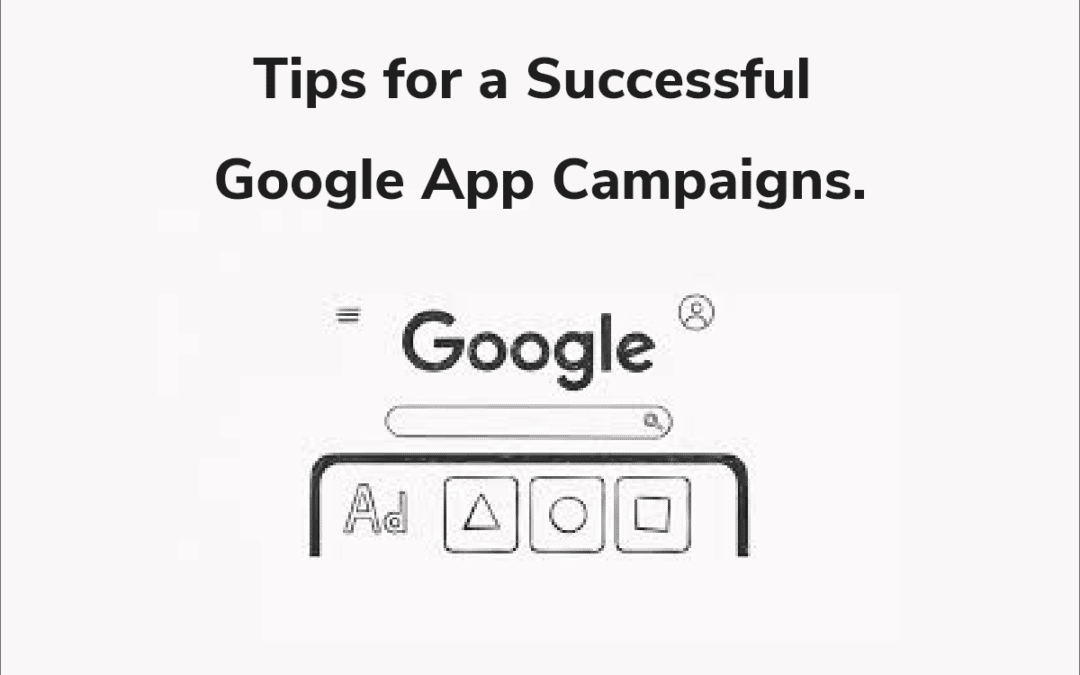Google app campaigns are paid advertising mediums to help your app marketers advertise your app to the target audience. These app campaigns leverage Google’s expansive user platform to display the ads to boost the app’s visibility. Therefore, if you create a proper campaign and align those to your marketing goals, your app gets a higher chance of reaching the right type of audience. Your app store optimization strategy will ensure your app is well-optimized. However, most advertisers apply this technique to push their apps and influence app store ranking. So, the potential for organic growth has its limitations.
Hence, you and the app marketers most likely should focus on organic and paid campaign channels to boost your app‘s growth and broaden your user base.
The role of app campaign.
App campaigns are different from other Google Ads campaigns. For example, Google first asks for your app text, budget, starting bids, pictures, video, and HTML5 assets.
Google will then mix and match your assets to create relevant ads. The text assets for Google app campaigns must include relevant keywords because they will influence the search on Google Play.
You need an appropriate app store optimization plan to build a successful app campaign. And Google app campaigns will take the keywords you use to optimize your app’s store listing.
Google will then use those assets to serve them across other channels:
- Google Search Network.
- Google Play (includes search results, related and suggested apps).
- YouTube.
- Google Display Network (Gmail, news websites and blogs).
- AdMob.
- Google Discover.
Types of App campaigns.
App install campaigns.
These campaigns are the most common types to drive app installs. You can either fix your bids and target manually or use Google Ads to automate the target and bidding.
The install campaigns can also target valuable users with higher prospects of performing a specific action.
The important elements that Google uses when creating and serving the app install ads:
- The ad’s location (Google Play, YouTube, Search Network, etc.).
- The ad type (banner or interstitial ad).
- The ad content (app icon, description, app store rating).
- The linked action after clicking an ad (directed to the app store or app install to the device).
Depending on the location of your ad, Google will display your ad:
- When app store visitors use specific search terms or
- The query phrases are related to your app category or
- To those interested in similar apps.
- For YouTube users Google will show the ads for those who are the best match to download your app.
Ensure you align the app install campaigns with your goals and the bidding control you wish to have. Determine your target CPI (cost-per-install) and decide if you want to set it up or use Google to maximize conversions.
App engagement campaigns.
These campaigns target users who have already installed your app to motivate them to perform specific in-app actions. The in-app actions can be purchasing premium products, prompting users to re-visit more frequently, or promoting a live event.
To run app engagement campaigns in Google, the requirements are:
- App has a minimum of 250.000 installs.
- The app must contain deep links.
- App’s clicks attribution.
- App has a chosen audience list.
- The app complies with adjusting the privacy and EU user consent policy.
Setting up the conversion window is an important step in-app engagement campaigns. Finally, you have to choose the target audience list. Which can be all users, active users, recently inactive users, or users who have completed some actions already.
Pre-Registration Initiatives for Mobile Applications
These campaigns are for android apps only. Their sole goal is to promote the app in the pre-registration phase. Therefore, the most important metrics to track for this paid campaign are Cost-per-pre-registration and the target cost metric.
There is a difference between pre-registration campaigns and app campaigns for pre-registration. Pre-registration campaigns focus on your app prior to launch, which has limited geographical availability. App campaigns for pre-registration promote the pre-registration campaigns in Google play.
You will have to focus on the rewards and value you can offer those who register for your app. The higher your value for early sign-ups, the more successful your app campaign will be.
Best tips for app campaigns.
- Look for ways to improve your app’s KPI and campaign ROI.
- Link your Google Ads and Google Play accounts so that you will not need to add a remarketing tag to show users the ads.
- Study your target audience, budget, bidding strategies, CPI, CPA, or CPpre. Then align the campaign’s goals with the app goals.
- Implement conversion tracking to track app installs, in-app actions, and pre-registrations.
- Focus on the app’s asset quality and upload the maximum number of videos, images, and text headlines. Google’s machine learning system will choose the best-performing version for you.

